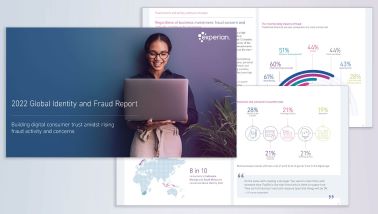Technology continues to have a huge impact on our behaviour and expectations. Yet, technology has not led to a one-size-fits-all approach for our online behaviour when it comes to security. Consumers and businesses agree that different solutions are needed to combat fraud and security problems. But which tools and solutions users prefer differs from target group to target group.
Companies must ask themselves to what extent their customers feel comfortable with the different solutions. To create trust and loyalty, online processes must take into account the different expectations of each generation.
As the number of digital transactions increases, so do concerns about online security. Fortunately, companies are regularly talking about fraud prevention, according to the results of Experians Global Insights and Fraud Report. Technology can be a solution to the challenges we all face, but there is no one-size-fits-all solution to preventing fraud and meet every customer expectation.
Willingness to share personal data
As more people realise how providing data can protect against cyber attacks, the number of people who see benefits in sharing data is gradually increasing. With fraud becoming more prevalent and consumers expecting companies to protect them online, it is no surprise that customers place a high value on online security.
As people become more comfortable with sharing personal data, they become accustomed to using new technology to do so. But which tools they prefer depends on different factors. As a result, companies must also provide different solutions and ensure that they are effectively implemented and explained to their customer base.
Generational differences
In general, consumers place the highest importance on security and privacy, but there are nuances by age group. For 95% of Baby Boomers, this is the most important aspect of their online experience, compared to 85% among Gen Z. And different security and fraud issues take precedence for different generations. For example, concerns about identity theft increase with age – 80% of Baby Boomers, compared to 70% of Gen X, 66% of Millennials and 58% of Gen Z.
The tools they choose to use to address these issues also differ. While baby boomers, Generation X and Generation Z prefer physical biometrics (e.g. fingerprint and facial recognition), millennials rely more on behavioural biometrics such as password patterns and the way you use your phone.
However, attitudes towards online security and privacy are not only determined by age. Consumers with a higher income, for example, are more likely to prefer security questions as a means of preventing online crime than consumers with lower incomes. And Experian research shows that people of all generations appreciate human-centred services for more complex security issues, even if they have no intention of using them.
Tools and education
It is important to use the right solution that matches the needs of the target group to create a personalised and enjoyable customer journey that makes people feel protected.
This means researching your customer base to understand what motivates them, which solutions to prioritise, how best to communicate new and existing tools and why certain solutions require more investment. If a certain group is uncomfortable with certain tools, this can be an opportunity to create targeted marketing and communication messages for them. This kind of information can help build trust in your business by showing what steps you are taking to address fraud and online safety.
As customers are more aware of the challenges involved in tackling online fraud, they are more willing to join in the fight against it. This collective approach to protecting the individual and the business will work better when companies take into account generational and contextual differences and needs.
As AI, mobile and cloud computing become more prevalent, companies need to take the initiative and introduce solutions for customers of all ages. Understanding the expectations of all online customers is essential in creating the optimal identity and fraud strategy that delivers a trusted, secure and positive customer journey. Read how Experian can help you utilise new data sources to create better customer relationships.

